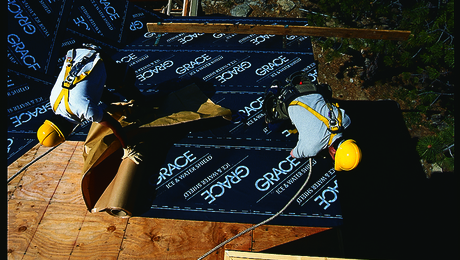Despite its slow and uneven launch in many states, the vastly expanded Weatherization Assistance Program funded by federal stimulus dollars has put a lot of weatherization workers in a lot of homes owned or occupied by low-income families. In collaboration with community groups that organize and manage local weatherization contractors and training, most states have met their weatherization goals for the first stage of the $5 billion program, and now qualify for their second allotment of funds.
That is good news. There have been few reports of shoddy or incomplete work, and the current volume of retrofits under this edition of the WAP – a program that generally has operated on a much smaller scale since its creation in 1976 – suggests considerably improved energy efficiency and significant long-term savings for hundreds of thousands of low-income households. It also means, though, that more workers than usual likely have encountered potentially hazardous insulation materials, such as vermiculite, that are well known to experienced retrofitters.
Because about 70% of the vermiculite mineral sold in the U.S. until 1990 came from a mine in Libby, Montana, that had asbestos deposits, the Environmental Protection Agency recommends that vermiculite insulation not be disturbed if it is found in a home. But at least one weatherization worker, in Michigan’s Genesee County, claims in a lawsuit he was not made aware of the potential dangers of vermiculite, even though his job required him to insulate many an attic.
According to a story published by ConnectMidMichigan.com, an online service of NBC-TV affiliate WEYI, the worker, Ray Barker, says in his complaint that he learned about vermiculite contamination on his own, and that his employer, the Genesee County Community Action Resource Department (GCCARD), fired him when he told homeowners and fellow workers about the material’s potential dangers.
“I was told it was perfectly safe,” Barker told ConnectMidMichigan.com. “It’s not. When I brought this to their attention, they fired me.”
The executive director of GCCARD, whose Home Maintenance Program has been providing weatherization services since 1975, says Barker was not fired for bringing concerns to his managers’ attention. Other workers expressed concerns about working around vermiculite, and the agency responded, GCCARD told ConnectMidMichigan, by researching the issue, buying more safety equipment, and implementing a policy of sealing off attics that have vermiculite insulation while work is being done.
Whatever the merits of Barker’s lawsuit, though, the story suggests that, even though many agencies managing weatherization work may have guidelines in place for weatherizing homes insulated with the material, there may be others out there that aren’t tuned into the issue.
Fine Homebuilding Recommended Products
Fine Homebuilding receives a commission for items purchased through links on this site, including Amazon Associates and other affiliate advertising programs.

Reliable Crimp Connectors

8067 All-Weather Flashing Tape

Affordable IR Camera



























View Comments
Sounds to me like there's a missing part of the story. I can't see firing someone for educating clients and co-workers but I can certainly see firing someone who did so in a crude or libel fashion.
I doubt the plaintiff is very well paid or happy to be working in hot, dusty attics... I can only assume he's one of many money hungry lawsuit seekers that increasingly make the news these days. There's a noticeable difference between a "whistle blower" and a "career victim".
Not that I am an advocate for the defending company who should've pre-informed employees and clients of any dangers associated with the job. But I am a realist (and a professional remodeler) who knows that you can't expect employers, product manufacturers, or government to protect you on the job.
Carpentry is an inherently dangerous career. Stop being ignorant and look out for #1 or move on.
DC